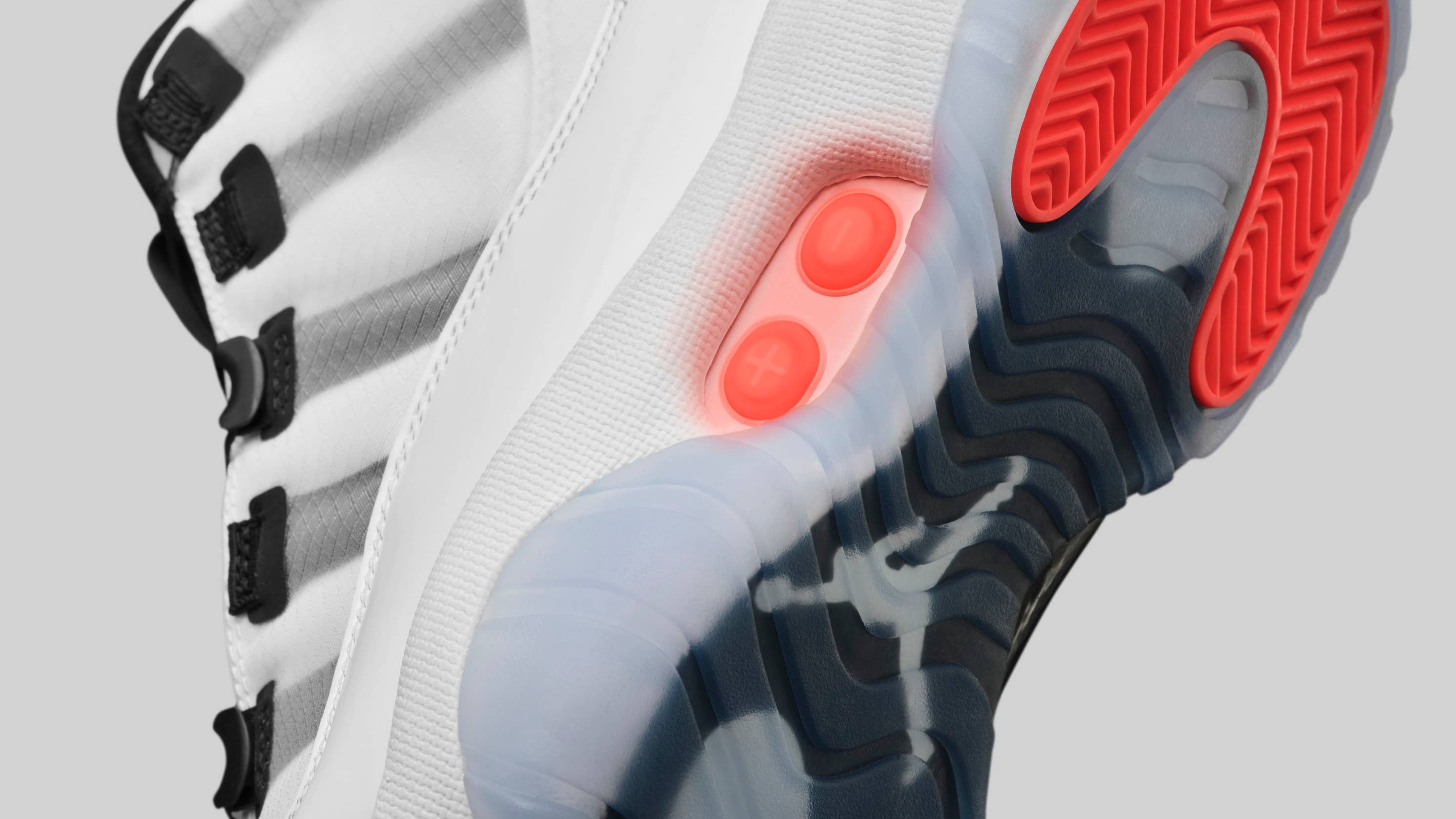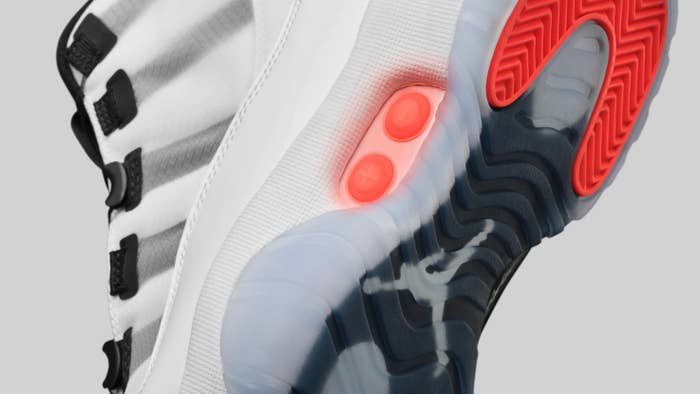
Nobody saw it coming. I didn't even see it coming, and I worked on Nike's auto-lacing technology for 10 years. I figured if Nike subsidiary Jordan Brand ever did utilize the Adapt lacing system, it would only happen after every other group at Nike did. But there it was, revealed for the first time last week: the Air Jordan 11 Adapt, an updated version of the classic Jordan 11 basketball shoe featuring power lacing.
The Air Jordan 11 Adapt, which releases via SNKRS on Dec. 30, lets the wearer tighten and loosen their sneakers through Nike's Adapt app or by pressing the buttons on the midsole. Nike's press release says that Tinker Hatfield, a mentor of mine who designed the original Jordan 11, showed in his sketches in 1995 that he'd wanted the sneaker to be laceless from the start. This new Jordan 11 eliminates traditional lacing and instead uses wires that jump to life electronically. The design is ambitious enough, but not elegant enough.
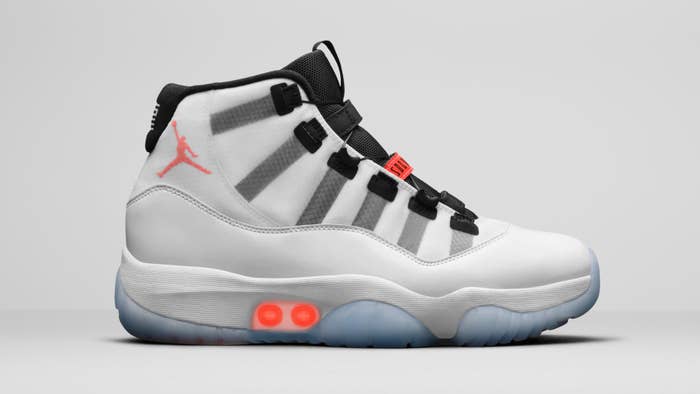
I have to say that while I've worked on a lot of shoes over the years—big projects like the first Air Yeezy and the Nike Mag—I don't like to call myself a designer. I worked with a ton of talented designers at Nike in my 13 years there, and my job as an engineer and innovator was to take their ideas and help turn them into physical objects. I worked on the Mag, the Back to the Future shoe that debuted power lacing in 2016. I worked on the HyperAdapt 1.0, Nike's next power-lacing shoe that released in 2017, and helped start the Adapt BB, its similar basketball shoe.
I left Nike three years ago and didn't have any involvement in the Jordan 11 Adapt. But I still love sneakers and I still follow what's happening in the footwear industry. I still like to explore how they're made and why they're made, usually via my YouTube channel. So, how did Jordan do with its first power-lacing sneaker?
Actually, when I first saw it, it looked more to me like a snowboard boot than a basketball sneaker. For basketball shoes, generally you try to keep the midsole as low as possible to help with stability. The taller the midsole, the more you need width or a big outrigger in the forefoot for stability. It's hard to tell from the images if they made these changes to accommodate the taller midsole in the Jordan 11 Adapt.
In the first HyperAdapt, we did a lot of things to try to make the shoe look sleek and thin, but at the end of the day you still need room in the sole for the motor and battery that make everything work. The bottom in the Jordan 11 Adapt, which houses the electronics that power the tech, is thick and chunky. I totally understand the big bottom, even if I don't love it.
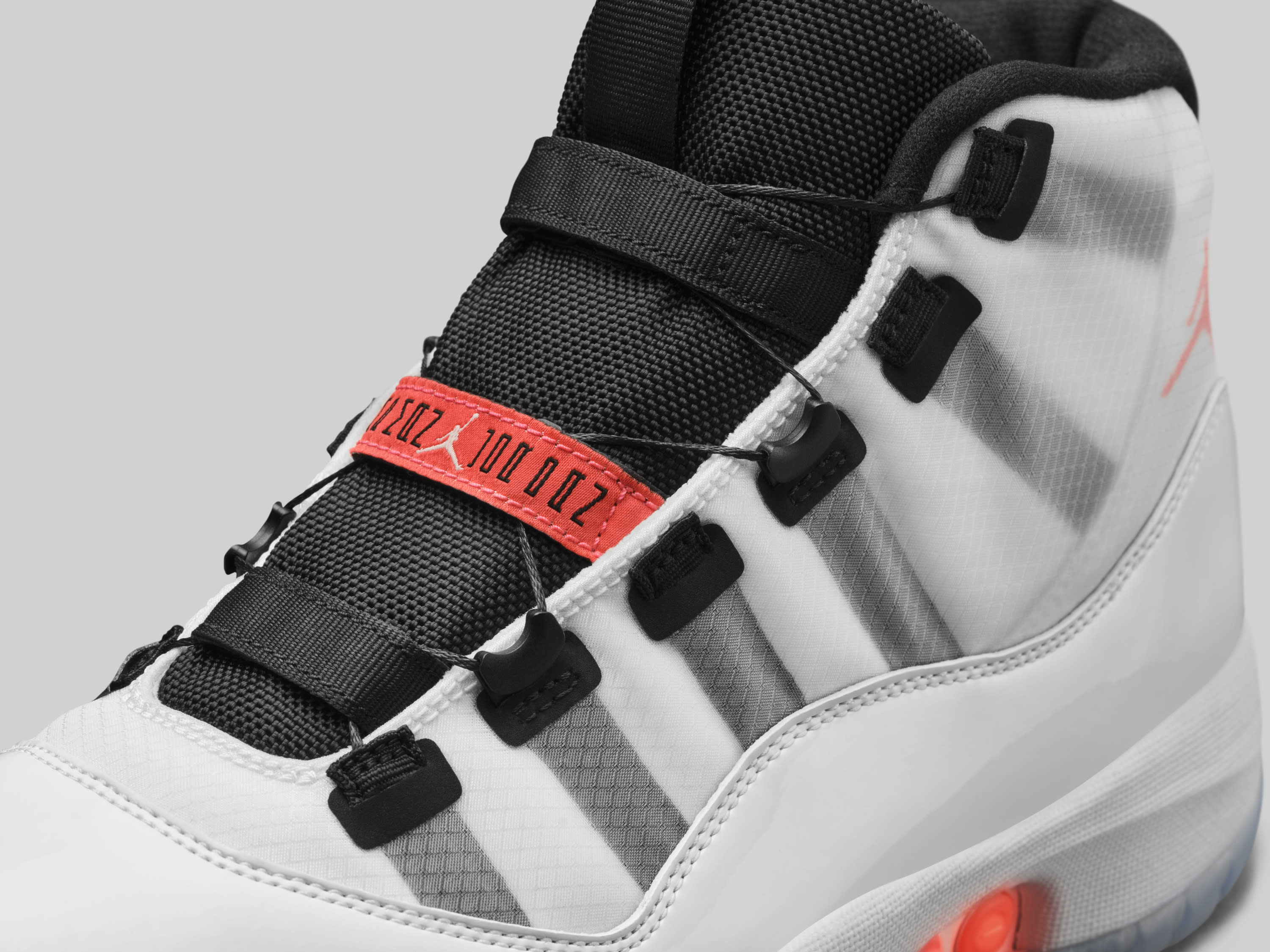
What I understand less is the look of the lacing. In fact, I can't stand it. You have six loops and eyelets, but only three are being used. Two of the three are plastic, just like the plastic eyelets you see on Boa lacing products. Now, the Boa system works really well, using an awesome dial that twists to tighten. It's a great tool in footwear—I've had shoes with the system—but I was super surprised to see the plastic on this Jordan. To me, the presentation here is off.
Zoom in on the product images and you'll see what I mean. I understand why they are using the plastic, it's to prevent the lace from shredding the eyestay, but it should be more discreet. They could have covered the plastic with webbing and made it look more integrated. My husband, who worked at Nike for 11 years and designs shoes for Allbirds now, said it looks like the sneaker is wearing braces.
The look matters, but when we first came up with Adapt it was supposed to be a performance technology. I think some of that is missing on the Jordan 11 Adapt. The power-lacing Nike Mag was a fun tie-in to Back to the Future: Part II that also had a functional element connected to Michael J. Fox's battle with Parkinson's. I love that Nike keeps putting Adapt in new shoes, but I want to see them actually use the technology to help people.

The brand unveiled the Jordan 11 Adapt on Veteran's Day; imagine if they'd done that while showing off a shoe that made life easier for wounded service people. That could have been a beautiful moment. Imagine if Nike made a power-lacing sneaker that addressed the struggle of pregnant women who have trouble reaching their feet. There are so many more groups that Adapt shoes could benefit.
Since Jordan Brand is using its most popular retro model as the base, it feels like the Jordan 11 Adapt is meant for collectors. But people who want to buy these and hold onto them in brand-new condition for years need to remember that shoes with electronics don't follow the same rules.
If you don't activate the battery somewhat regularly, it will die. If you don't maintain them and take care of them, the electronics will fail, and then the shoes are useless. Your deadstock Nike Mags from years ago? If you've never used them, they might not work anymore. If you're going to spend money on these Adapt shoes and collect them, do you have a process set up to recharge them every six months? If you don't, they will not last.
That's a big risk for a shoe that is rumored to cost around $500. I won't be surprised if they are that much when they release in December, but I think it's too expensive. We launched the power-lacing Mag four years ago, so Nike had time to make the units that go into shoes like this more affordable. I would have loved to see the price drop a bit more than it has, but I understand the challenges. As you improve the tech, the price doesn't always go down, sometimes it goes up.
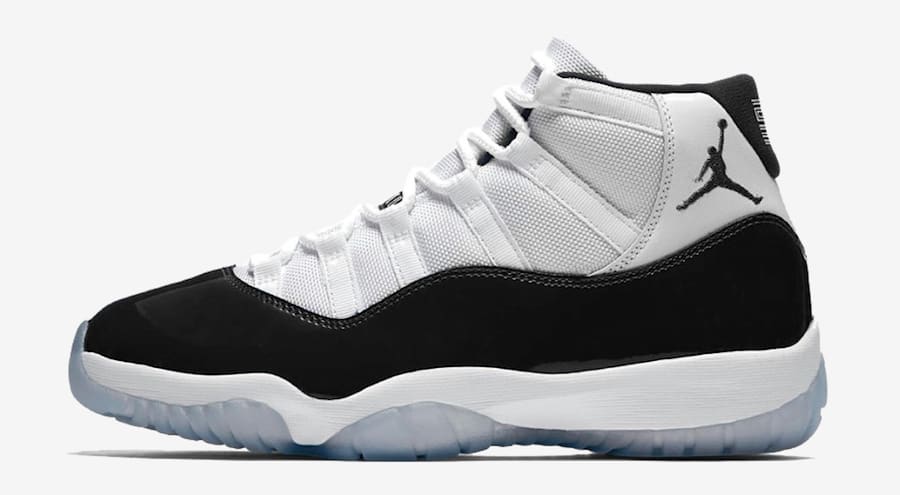
I would also expect some nicer materials for $500. If you look closely at the product images, the materials look pretty basic, even cheap in some cases. Again, it's hard to judge without seeing the shoe in person, but I would expect the 11 with Adapt technology to be using only premium materials.
While I'm glad Nike is continuing to push forward with Adapt, I still think that using the Jordan 11 here was a push in the wrong direction. I haven't had the opportunity to see the shoe in-person yet, so maybe I'll feel differently once I can hold it, measure it, and try a pair on. (Although, I'm doubtful that they'll come in my women's size 8.) The innovation is there, but right now the integration is not. And the Jordan 11, one of the best sneakers of all time, deserves better than that.

